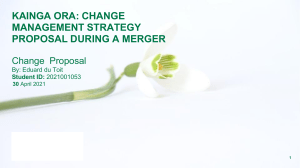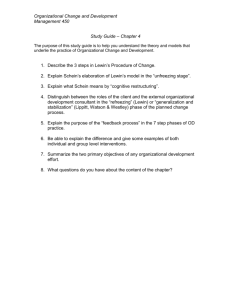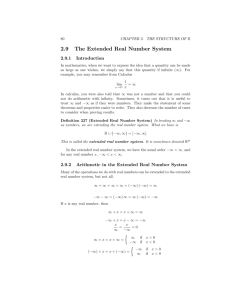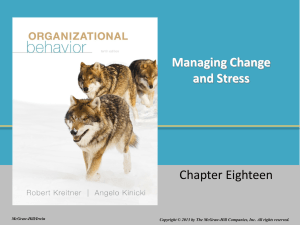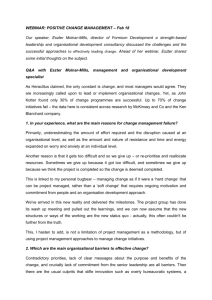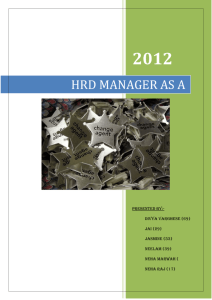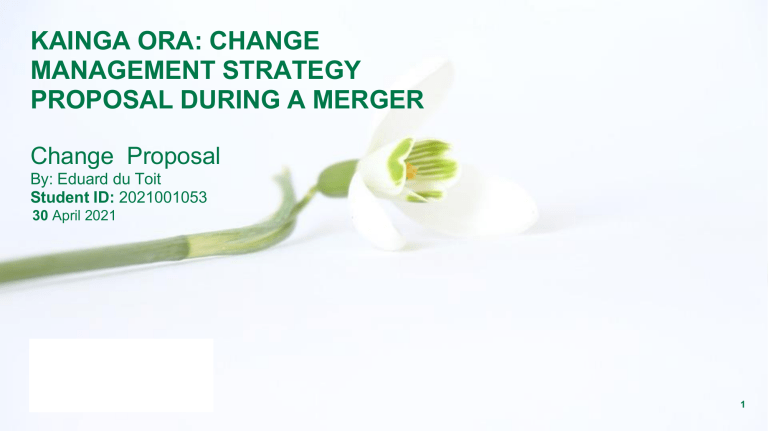
KAINGA ORA: CHANGE MANAGEMENT STRATEGY PROPOSAL DURING A MERGER Change Proposal By: Eduard du Toit Student ID: 2021001053 30 April 2021 1 Background on Tools and Methods Used: • Change Mangement Strategies Used: • Lewin’s 3 Step Model • Kotter’s 8 Step Process For Change (Leading Change; 2008) • (Kotter and Schlesinger: Choosing Strategies For Change (Havard Business Review) • Research Similar To Government Mergers: • Saskatchewan Governmental Publications • Proquest Via Southern Institute of Technology. • More Tools and Methods (not limited to) • Lewin’s Force Field Analysis / Kubler Ross The Change Curve • Edgar Schein’s Cognitive Redefinition Study • Johari Window (Joseph Luft (1916–2014) and Harrington Ingham) • Conflict Identification and Ramifications: • Thomas and Kilmann Conflict Ramification Method 2 • Larsson & Finkelstein. 2008 Conflict Resolution Background • New Zealand is facing a national housing crisis lacking nearly 22 000 state homes, and 10 000 affordable homes due to supply side problems, economic growth vs annual income earnings by nearly 10 times. Kāinga Ora Home and Communities (the new government entity) is tasked to address the housing crisis. Due to the complexity and scale of this announcement, a merger is required by entities namely Kiwibuilt and Housing New Zealand. The merger is in its pre-launch stage. • The companies organisational structure, processes and staff background: Organisational Structure: Both companies have Hierarchical organisational structures both to be ceded to a functional organisational structure. Staff Count: Kiwibuilt: Nearly 1000 (established 3 years, or, 2018) Housing New Zealand: 1500 (established 20 years, or, 2001) • Processes and Content: Kiwibuilt: Low to mid range computing operations that mostly leans on technical expertise and minimal reporting. Housing New Zealand: Government Mainframe Computers which are complex systems that handle vast quantities of data processed by employees. • As a result of the organisational differences, a Reshape Team‘s is formed with a remit to ensure through reshaping that the new organisational structure, staff integration and processes will support the new intended wider organisation called Kāinga Homes and Communities. 3 Situational Factors and Problems At Pre-Launch Summary As a result of Kāinga Ora’s Reshaping, the Executive and Reshaping Team’s remit is to be: • Address Problem Area 1: Currently, both companies hold specific structures that exists independently, which needs to be centralised. Whilst this has previously been an effective structure, this is no longer adequate for the new merger. • Address Problem Area 2: “Processing organisational content (resistance to financing, technology, product or services integration. The proposed change management strategy needs to systematically cover multiple factors over, under and if required, a conglomerate of fragments of both the organisations as it holds direct implications on the services being delivered its people. • Address Problem Area 3: Concerns around the human element and incomprehensible dynamics: The Reshaping Team will need to incorporate an effective solution that establish a ‘centre of care’ around employees wellbeing, simultaneously avoid change-fatique, identify conflicts, implications on the organisation or merge and resolutions, and address job security. • Address Problem Area 4: 4 The urgency at how quickly change can or cannot occur. The merger could add further stresses to its employees if the timing of Current Change Limitations Due To the Pre Merger • Based on the problem areas identified in the previous slide, the current change requirements, where the structures, processes, people (resources) and urgency are embedded into independent organisations, rather than in a centralised team creates: Limitation 1: An inconsistency of practice, systems and processes, that creates negative or irritable forces disrupting the current state. This results in the need to reinvent the wheel across both organisations and limits the opportunity for shared learnings. Limitation 2: Lack of clarity regarding the roles and responsibilities in the organisational team. (Lewin outlines that a lack of positive enforcement or clarity creates low motivation for change). Limitation 3: Difficulty in ‘balancing the urgency (pace) and implementing agents of change or leaders through the new governance framework. This will take time. The Method for Managing The Problem Areas and Resistance; “The purpose then is therefore to ‘assess and understand’ which change management model ( (A) Lewin or (B) Kotter) and its framework is most effective at addressing problem areas numbered 1 to 4 during the merger with the limitations” 5 Quick Review on Lewin’s Change Model 6 A) Lewin’s Three-Step Model: • To ensure the“Reshape Team” is enabled and having the best chance at being successful from the get go, it is necessary having the appropriate new structure and resources phases embedded clarified. To assist a big organisation such as Kāinga Ora, Royce’s Waterfall 1970 model outlines six phases of change in relation to Lewin’s Force Field Analysis model; UNFREEZE CHANGE PROCESS REFREEZE Creating Awareness: First Step During Lewin’s Unfreeze stage) the realisation of need (phase 1 of 6) for a new structure, strong leaders and resources are centralised into the a ‘Reshape team’ to provide consistency, reasons for the change, and efficiencies in resourcing, and a central knowledge-base. This will enable top management to take strong action and centralise teams to the new organisation structure. Disturb the ‘status quo’ to reorientate internal problems (phase 2 of 6) . This will address problem area 1,or, structural reformation. Diagnose the problems: Engage and oorientate the team to the structural model, which is the basis of the "Reshape" and, therefore, aligns teams with those change need principles. This would help embed efficiencies and eliminate problem areas within the organisation (phase 3 of 6) Key Summary: The current status quo and structures will be unfrozen in order for the “reshape team” to create a centralised knowledge-base system, to help others understand through awareness and cohesion. This will be achieved by leaders opening up to employees to identify any resistance in their current stage of their independent organisations (Kubler Ross change curve) 7 A) Lewin’s Three-Step Model: • UNFREEZE CHANGE PROCESS REFREEZE Reorganising leaders in to specific positions. They will assist by investigating new problems and understanding solutions for the merged company. This forms part of Lewin’s second change step by making use of employees personal experiences through trailand-error attempting at change. This will address problem area 2,or, organisational content. What support is there to employees: Governments make use of Programmes and Courses- Change Managers position to lead the team of employees, which will result in shared learnings, consistency of approach and programme/portfolio level visibility This will provide additional Change Manager’s support for both the existing and new organisation. (phase 4 of 6) Key focuses: Encourageing others is the call of duty everyday , to encourage everyone to be invested in the change. Engagement: Push for better engagement between managers and employees. After the unfreeze stage, the change leaders in their specific roles will investigate problems and solutions through employee trail and error. This occurs before refreezing a new status quo. How? Implore Constant communication: Employees need to be frequently updated on the ‘ change status’ so that they don’t feel in the ‘dark’. Why? To address and avoid possible, and positional conflict. Strong leadership with good interpersonal skillset is required to drive change. 8 A) Lewin’s Three-Step Model: UNFREEZE CHANGE PROCESS REFREEZE Lewin further suggest to leaders to reinforce employees suggestions and push for commitment otherwise change efforts will be short lived. This will address problem area 2,or, organisational content (phase 5 of 6) Lewin’s Refreeze or Locking In Change Phase: The Reshape team positions the positive results positions within 'Alliances' and any future Alliances to support greater progress and, therefore, better support for the rest of the team in the new organisation. Result: Provide additional overall support for all employees moving forward (phase 6 of 6) Key Summary: Offer ongoing training and support to the employees on the new ‘status quo’ of the organisation Celebrate and promote individual successes. Question asked: What about Governmental agencies undergoing constant change? 9 Quick Review on Kotter’s 8 Step Change Model 1 0 B) Kotter’s 8 Step Change Model (Step 1 to 4) Step 1: Creating Awareness Around Urgency: Kāinga Ora’s Reshape team is tasked with creating an urgency around the need for the change. This urgency is spread out to as to all departments leaders in the covering most management capabilities i.e Finance and Policy, Development, Planning and Design, Delivery Teams, and finally Iwi Maori Committee. Step 2: Building a coalition of change agents around effective management: Positioning effective, credible, and influential leaders in management positions is mentioned by Kotter as one of the guiding coalition’s responsibilities. Large-scale change can only occur when a strong leadership team (in this case one or more effective lead in every department with different senior responsibility) is moulded to guide the masses around a common opportunity. In essence, at this stage is to “block the blockers to change” (Johari Window refers this to the hidden area). Step 3: Develop a Vision and Strategy: Fundamentally, for the merger to be successful from the get-go this means that the reshape team must have the strategy and vision naturally dovetail with organizational sustainability. The vision needs to be comprehensive and integrating future organisational goals. This approach is based on the strategy and vision of the top “steering change managers” only. Step 4: Communicate the vision: Kotter (1996) asserts that communicating knowledge of the change is not enough but rather to turn over resistance by accepting that employees will experience multiple emotional deadlocks which will hinder progress. How do managers the reshape team deal with this? Simplify, repeat and simplify again the message around change that drives acceptance. Creation of a communication plan will outline the vision, objectives, principals, audience and effected jobs. Key Message Step 1-4: Create urgency, block the blockers to change, dovetail the vision and strategy, and lastly, simplify the message, communicate to all levels and repeat. FOUNDATIONAL WORK IS COMPLETE…. 1 1 ….Continued: Kotter’s 8 Step Change Model (Step 5 to 8) Step 5: Barriers Affecting Success: Integrating change requires putting the new organization’s people, culture, development management and communication first. This can’t transpire if the new structure is not defined correctly nor upper management not removing obstacles or barriers(Kotter;1996). Therefore; a) Structural barriers plays a big difference. (Problem area 1) b) Strategy and Vision Misalignment c) Tools, technology, resources misalignment (Problem area 2) d) Misalignment of teams, strategies and synergies (Problem Area 3 and 4) Creating Intragroup Conflicts Step 6: Identify and Create Short Term Wins: Pre-establish short term wins by identifying multiple milestones along the way. That way uplifted morale will boost efforts towards change. Step 7 and 8: Sustain, accelerate and make the change stick. Evaluate the strategy, vision, tools, technology, resources did align and whether the change was positive, then sustain it but accelerating efforts towards a permanent fixture. Also, eliminate unwanted processes and structures that don't stick or work well. Key Message Step 5 – 8: Get rid of barriers or change obstacles that disenfranchise stable reporting structures, by ensuring the strategy and vision of the mother company is aligned. Push, encourage and move employees towards short term wins and lock change in once it is positive. 1 2 What About Conflicts? 1 3 Conflicts and Ramifications Summary Thomas and Kilmann Approaches 5 Approaches Dealing With Conflict Resolution • Conflict Areas Identified Caused By The Problems 1-4 For The Merger: • Conflict 1: Restructuring opens opportunity for job cuts /demotions / instability: Government will retain leaders in top positions. It was identified that during Kotter’s second step that the organisation must lean on influential and effective leaders which have (secure conflict skills). Which potentially clears out unwanted positions. This means that there is the possibility of high employee turnover with a slow recruitment process. Indirectly, leaders will be under pressure to manage gaps in the workforce. • Conflict 2: Muirhead and Tillman (2002) suggest differences in corporate cultures, can cause conflict. It has been highlighted by Helm and Remington (2005) that it is often problematic to identify isolated factors such as trustworthiness. Can create distrust, disengagement from work and low morale that may have far-reaching consequences. This further effects collaboration issues and prioritization. • Conflict 3: Effect on differences in policies and procedures support : Practices, policies, and processes that was predetermined without the insight of employees will shut them out of individual communication or future contribution. This causes a lack of productivity, friction between employees, and low morale. • Conflict 4: Structures, skills, systems, and management barriers. Not much autonomy with the new merger. Everything in the organisation except daily operations is top managed. Not leaving much freedom for employees to move in. Creating lack of motivation and innititave. 1 4 Expected Delays/ Drawbacks / Lessons Learned • Don’t draw back on integrating the change to late because of being stuck on planning. The focus is to rather to gage in to a few major issues that could potentially hold up change early on. • Be clear to everyone in the organisation how the merger will take place, what the processes and how or if it will affect their personal circumstances at work. Change is a process, not an event (Lewin) and transition takes time. • Kotter suggests that having a clear and tight top management team engaged early on limits most resistance against change. Therefore, the pace at how quickly change can occur won’t be met with resistance. • Employees value honest, regular and transparent communication from upper management which in effect have an ‘credibility compass’ steering motivation towards change. • Merging two pre-existing cultures in to a new one is not favourable, therefore its best to start building a new culture with the employees together. Rebuilding confidence, morale and effectiveness (The Change Curve) with a focus set on the future. • During Lewin’s unfreeze stage, diagnose potential internal processes, technology and inter-work drawbacks quickly and don’t hold on to planning to long. • The human element is a critical if not the most important factor to consider when considering change during mergers as people drive change (people come with language barriers, sensitivity issues) and are prescript to the current cultures they invested in. Treat employees with respect. 1 5 Choice Of Change Management Framework……. Kotter’s 8 Step Process For Change • Addresses Problem Area 1: Both companies hold specific structures. Merging two pre-existing cultures in to a new one is not favourable, therefore its best to start building a new culture with the employees together. Strategic continuum calls for a fast planned, with little involvement of others approach in order to overcome resistance. BEFORE HAND. Unlike Lewin’s Unfreeze stage, the most challenging stage of during the model would be the initial stage where most resistance is felt. • Addresses Problem Area 2: Processing organisational content: It will take time to making adjustments and merge the organisational content. Step 5 of Kotter’s model suggest to incorporate the right resources early on which prevents future delays. Unlike Lewin’s model, it is not detailed enough for such a big governmental agency, nor his framework in a scientific setting rather focusing on the theory. • Addresses Problem Area 3: The human element and incomprehensible dynamics: Employees value honest, regular and transparent communication from upper management which in effect have an ‘credibility compass’ steering motivation towards change. Unlike step 3 Lewin’s model, it freezes behaviors which in an ever changing environment in Government won’t suffice as change is constant. • Addresses Problem Area 4: Kotter suggests that having a skilful management team engaged early on limits most resistance against change. Therefore, the pace at how quickly change can occur will be met with the least resistance. Unlike Lewin’s model, it is more about understanding the need for change rather acting on urgency ad change its self. 1 6 Proposed Structure After Merger (Flat (Horizontal) Organisational Structure) Director Infrastructure and Civil Construction Manager Civil Construction Manager Infrastructure Planning and Financing Decontamination Innovation Lead Piritahi Owner Interface Manager * Head of Preconstruction Programme Coordinator Data Analyst Programme QS/Estimator Manager ACAP Stakeholder Manager Alliance Interface Manager (Porirua) Piritahi Health & Safety Advisor Office Manager/ EA (Te Aranga) Reporting line change * ** Title change This role is now vacant The title of this role has changed Reporting and title change Reconfirmed New position from consultation New position postfeedback Permanent Position Fixed Term Position Matrix Position New role post-reshape 1 7 Current Structure Before Merger : Tall Organisational Director Infrastructure & Civil Construction Structure Project Co-ordinator Principal Advisor Commercial Manager – Infrastructure & Crown Funding Team Leader Infrastructure Managers Infrastructure Manager (Roskill) Infrastructure Manager (Mangere) Infrastructure Manager (Tamaki) Infrastructure Manager Northcote/Or anga/New Projects Infrastructure Manager Lower North Island Manager Infrastructure Planning & Financing Quantit y Surveyo r Programme Manager ) Programme Manager Regional Funding Northern Programme Manager Regional Funding Southern Programme Manager Crown Funding (Other) Owner Interface Manager (Piritahi) Head of Communication s and Key relationships Head of Preconstruction (Piritahi) Project Manager – Alliance (not yet actioned, however place holder pending resourcing needs) Project Director – Piritahi (Piritahi – not yet actioned, however is in last version of new structure) Owner Interface Manager (Te Aranga) Office Manager / EA (Te Aranga) Community Engagement Manager (Te Aranga – not yet actioned, however is in alliance agreement) Project Manager – Alliance (not yet actioned, however place holder pending resourcing needs) Manager- Civil Delivery Senior Project Complex/ Greenfields Project Manage r Project Manage r Senior Project Manager ( Porirua/ Lower North Island) Project Manage r Senior Project Manager (Mangere) Project Manage r Project Manage r Senior Project Manager (Northcote / Oranga/ Hob Pt) Project Manage r Project Manage r Senior Project Manager (Roskill) Senior Project Manager (Tamaki) Project Manage r Project Manage r Project Manage r Project Manage r Decontamination Innovation Lead In UDD Commercial Team – Dedicated resource to support crown funding of infrastructure ( e.g James Martin) Existing Roles within UDD but external to I&C Programme Analyst Currently in I&C structure Permanently Assigned into Alliance Partners New roles: Although there are 19 new roles in green. 3 roles in the SKO Design Document have been removed. As a result, there is only 16 new roles in the aggregate
